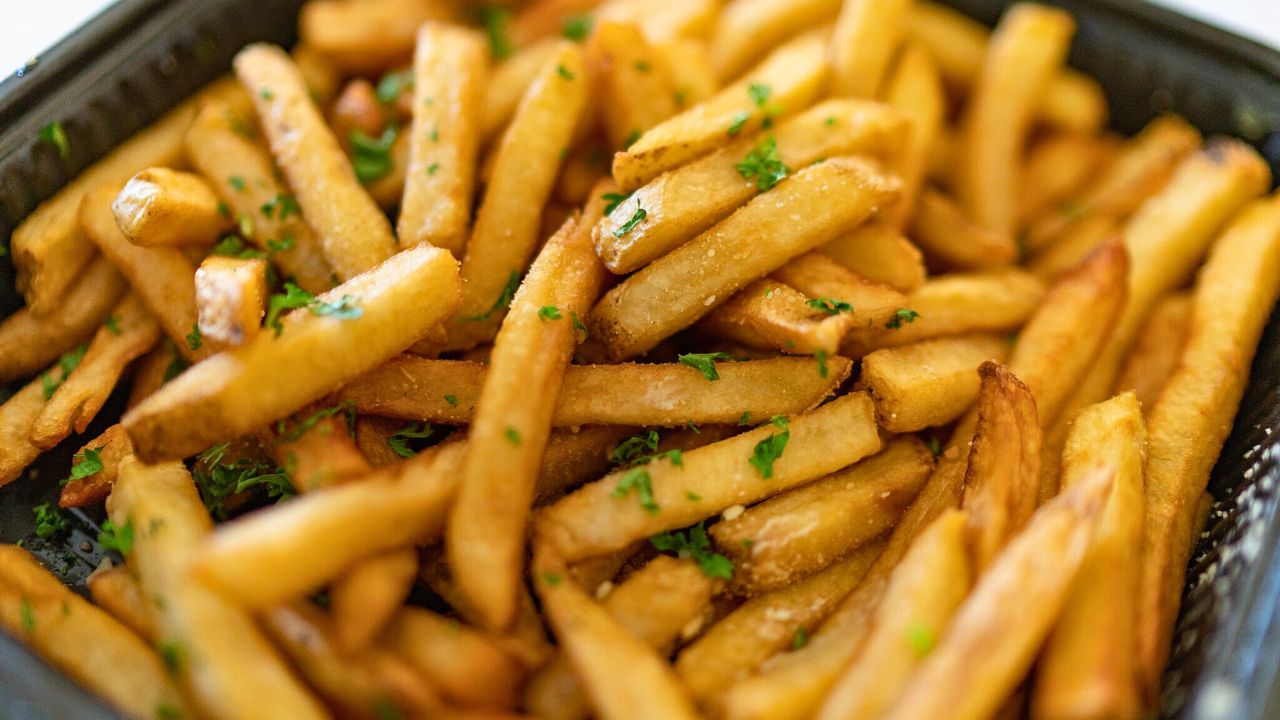15 Foods Known by Different Names Around the World

If you are from America and order chips in the U.K., you won’t get a handful of Lays. Travelers should know how different countries name their dishes to avoid wasting money and having unpleasant surprises.
It’s helpful to understand differences in food names for many reasons. Perhaps we are following a recipe, and an ingredient is listed that we don’t recognize. In other cases, it’s simply a case of translating an English word into another language, although we need to watch out for any national changes to the dish.
It’s also fascinating to consider the differences between regions while understanding why the anomalies in naming occurred. Each food on our list is called something different depending on the region you’re in, so be prepared for an unusual culinary journey.
1. Fries

The U.K. often differs from the rest of the world when it comes to food names. Over that side of the Atlantic, fries are called chips. In many countries across mainland Europe, you can expect to order frites as a local delicacy from street retailers. The U.S. and others use the word “fries,” which is the cooking method. In Great Britain, chips are the term for products that are thicker pieces, or “chips” of potato.
Since the rise of certain fast-food chains, some British people have referred to thinly cooked fries as “French Fries,” but most are adamant that chips are the correct option.
2. Chips

To confuse things even more, the U.K. has its own name for chips. They’re called “crisps” because they are crispy fried potatoes. If you order a plate of chips before a meal, you’ll likely receive fat, fried potatoes with lashings of salt and vinegar instead of the popular thin sliced snacks made by Lays. The British have used the word “crisp” to describe the food’s texture.
The concept of chips and dips is catching on with the younger generation in Great Britain, but a bag of crisps is the popular reference for a popular lunchtime snack.
3. Cilantro

From the original Spanish, cilantro translates as “coriander leaves.” Technically, the word coriander refers to the seeds of this plant, but in the U.K. and some other countries, it is used to describe the whole herb.
Americans wouldn’t use the word coriander in any context, though the herb has been available in the States since Mexican immigrants brought their dishes to the country. Still, the increase in TV cooking shows on both sides of the Atlantic means we can understand each other, even if we have no intention of swapping the word cilantro for coriander.
4. Prawn

If you like being utterly confused, consider the case of the prawn. In the U.K., a small prawn is called a shrimp. In contrast, the United States calls every prawn a shrimp, regardless of size, and sometimes uses “jumbo shrimp” to discern between larger and smaller versions.
The use of the word prawn to denote the larger shellfish version is a pattern repeated in other English-speaking countries. In this case, size matters, so be prepared to be overwhelmed or disappointed if you get your order wrong.
5. Omelet

Many already know this one, but considering the global viewpoint is worth considering. America and the U.K. are united in calling this dish an omelet, although the British typically spell it differently.
It’s a frittata Espanola in Spain, while Italians refer to the dish as a frittata. The differences are largely due to language differences but watch out for ingredient variations. The essential components of the dish differ slightly around the world. Frittata translates as a potato-filled omelet, while potatoes are unlikely to be used in English-speaking countries.
6. Hot Dog

It’s another food where Britain and the United States agree; this time, there is no dispute over the spelling. A hot dog is a hot dog, no matter which side of the Atlantic you happen to be standing. Nobody is certain how the name arose, but it’s claimed it references the German love of sausages and their long, dachshund dogs.
If you travel to Germany, however, you will be faced with a vast choice of pork products known as “wurst.” The closest option to the traditional American hot dog is the frankfurter, but why not take the opportunity to try something a little different?
7. Biscuits

The U.K. doesn’t have a direct equivalent to the United States’ bready, flaky biscuits. The American version resembles a scone, but the Brits wouldn’t serve it with gravy. Over here, a scone is a sweet dish, primarily served with jam and cream.
Britain loves biscuits, but its version is thin cookies with a crisp texture. The British take their word from the Latin “biscoctus,” which means twice-cooked. Biscuits are best served in the U.K. with a strong cup of tea.
8. Baked Potato

The British also have different names for certain cooking methods. In the United States, a baked potato is a tasty hot snack usually served with cheese, sour cream, and chives. It gets its name from the method by which it is cooked.
In the U.K., we call it a jacket potato, with the skin acting as the potato’s little coat. Our fillings are different, too, and we’ll essentially serve anything in a jacket potato, including baked beans, chili con carne, and tuna.
9. Peanut Butter

Some food names translate better than others. The Dutch call peanut butter “pindakaas,” which seems unremarkable until you realize that this translates as “peanut cheese.”
The reason relates to a national ruling that states products can only use the name “butter” if butter is used in manufacturing. Clearly, the same rules in the Netherlands don’t apply to cheese, while in English-speaking countries, it’s currently OK to use the word “butter” in this context.
10. Eggplant

The British version of this purple-colored vegetable sounds like it derives from the French language. In the U.K., you must ask for an aubergine if you want an eggplant.
It’s claimed that aubergine comes from the Sanskrit word for “anti-wind vegetable.” Unsurprisingly, the French, Germans, and other nations also call it an aubergine, and the close proximity between Britain and France is the reason behind the UK’s version.
11. Zucchini

The British employ a similar system with eggplants and zucchini. In the UK, the delicious green zucchini is referred to by its French name, the courgette.
It’s believed that Americans stayed loyal to the Italian version of the name when immigrants first introduced the vegetable to the US. It’s derived from the word zucca and translates as “small gourds.”
12. Arugula

Arugula is a healthy green with a distinctive, peppery taste. It is a versatile ingredient used in various delicious salads. It originates from the Mediterranean region, where it has several different names.
You’ll get arugula if you see rucola or Italian cress on the menu while enjoying the Mediterranean scenery. In Italy, you’ll probably see this green be called rocket.
13. Bell Peppers

In the United States, these delicious plants are named according to shape. They resemble bells, so it’s logical to call them bell peppers. Some countries describe them as capsicum, the genus they derive from.
We sometimes keep things simple in the U.K., and the extended version seems unnecessary, so we’ve dropped the word “bell.” In stores nationwide, they are marked up as “peppers.”
14. Hot Links

This classic American treat has different names depending on where in the country you live. Around most of the U.S., they are “hot links,” but in New Orleans, you’re more likely to hear the term “hot sausage.” Links is a term used because the individual sausages are literally linked together.
The French name is Chaurice, while the U.K. doesn’t have a literal equivalent. The British will likely call them sausages, or you may hear the colloquial phrase “bangers.” When fried, sausages often spit or “bang,” so that’s why the U.K. uses this term.
15. Ham

The United States uses the French word jambon to derive the name for the same cut of meat. In the U.K., however, this pork product is known as gammon, while the US refers to it as a ham. The reason behind the variation is that, in the UK, the name comes from a Middle English word, “gambon,” which has existed since the 15th century.
The British also use the word ham, but it’s not for the larger cut of meat suitable for a family meal. On the east of the Atlantic, ham usually refers to thin slices of cured pork placed in a sandwich.





